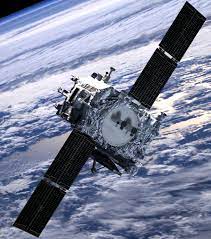STEREO Spacecraft : NASA

Nasa’s Solar Terrestrial Relations Observatory (STEREO-A) spacecraft made its first Earth flyby nearly 17 years after its launch.
- The pair of STEREO (Solar Terrestrial Relations Observatory) spacecraft were launched on October 25, 2006, from Florida’s Cape Canaveral Air Force Station.
- The two spacecraft were situated in Sun’s orbit, STEREO-A (“Ahead”) and STEREO-B (“Behind”).
- The dual-spacecraft mission accomplished its major goal by delivering the first-ever stereoscopic view of our star.
- On February 6, 2011, another significant milestone was achieved as both STEREO-A and -B reached a remarkable 180-degree separation in their orbits, which gave us the full sphere image of the Sun.
- It will synthesize its views with those from Nasa’s and the European Space Agency’s Solar and Heliospheric Observatory (SOHO) and Nasa’s Solar Dynamics Observatory (SDO).
- Its distance from Earth changes throughout the flyby, it will optimize its stereo vision for different-sized solar features at different times, akin to adjusting the focus on a several million-mile-wide telescope.
- It will allow scientists to understand how a coronal mass ejection’s (CME) magnetic field evolves on its way to Earth.




